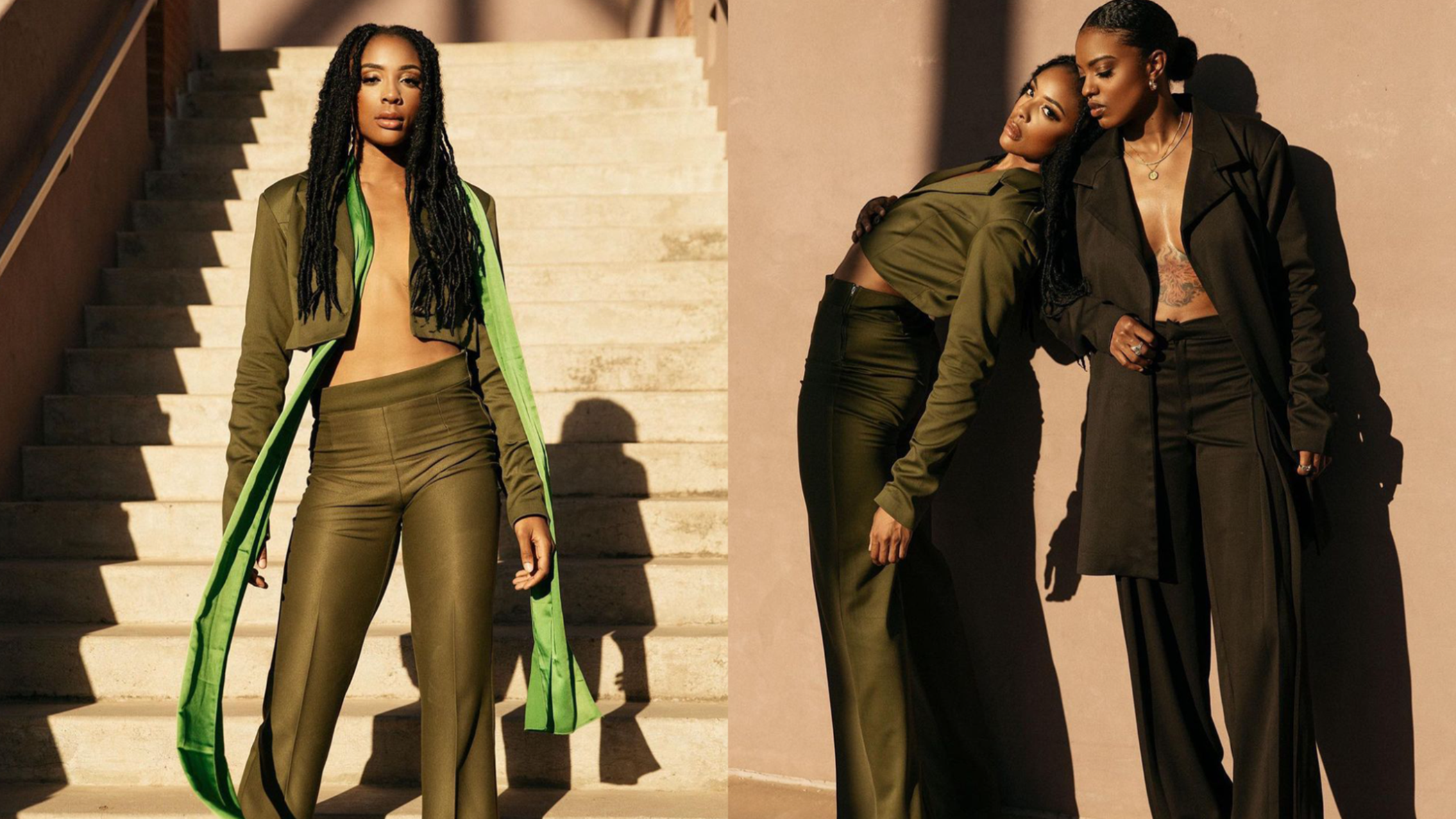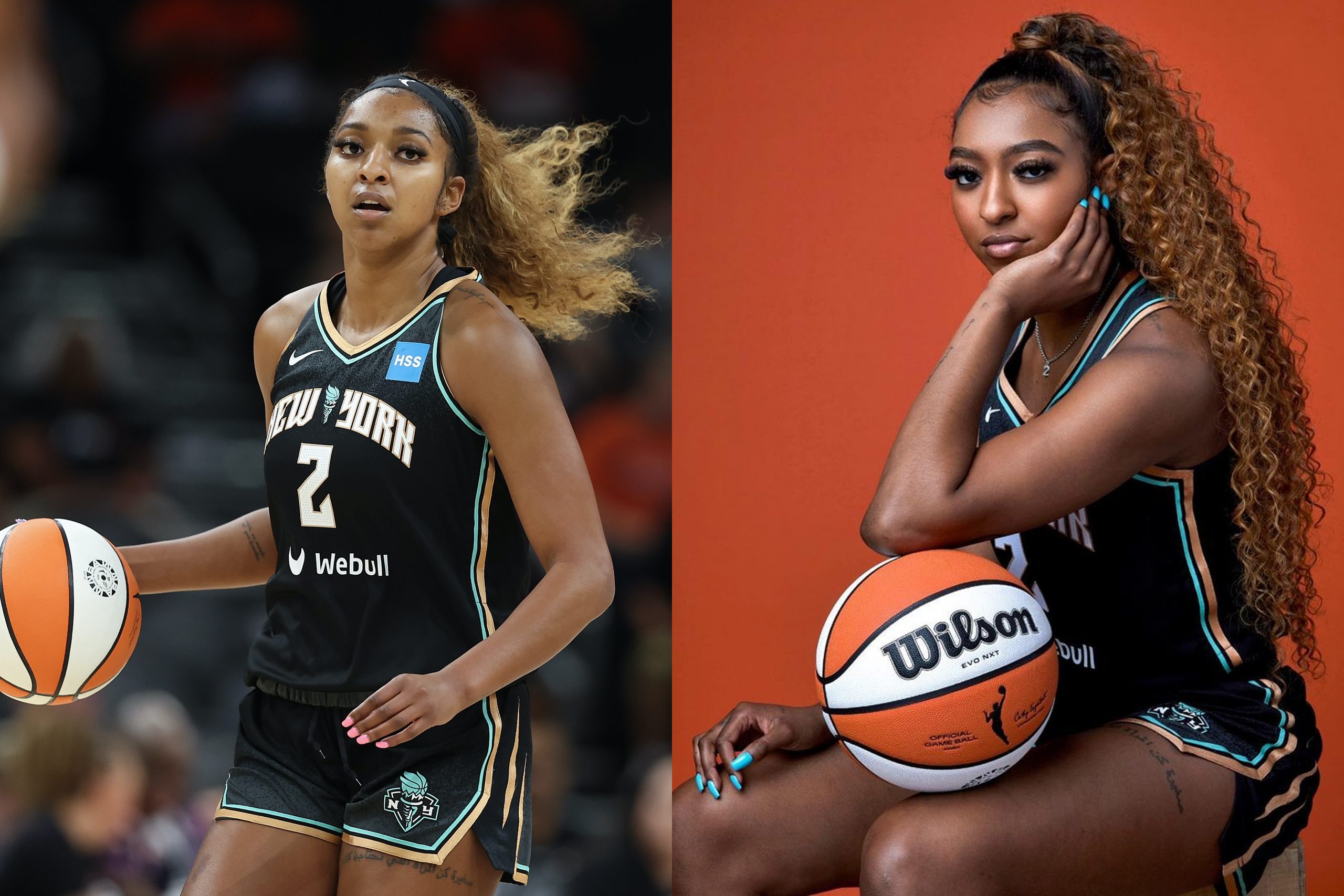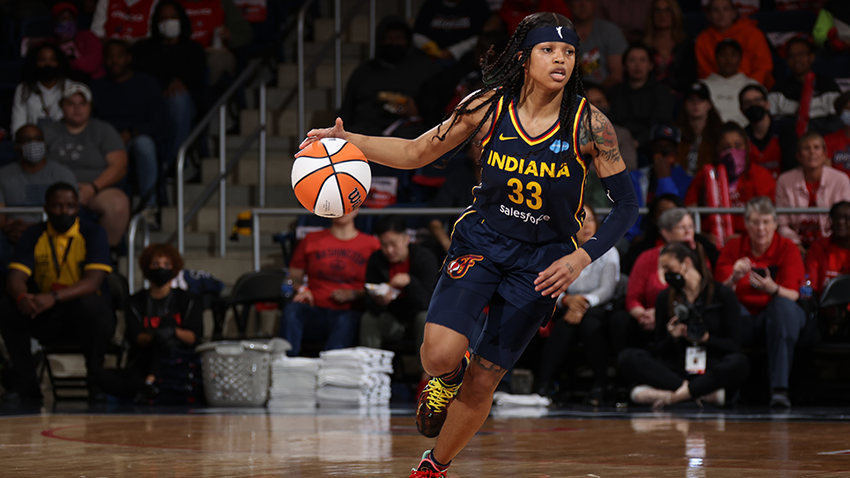The W at 2023 NBA Crossover: A Conversation with Karabo Poppy on Her Collaboration with the W and the Power in Finding Your Identity

I often contemplate where my passion for basketball stems from. It’s greater than the game itself; my own personal identity fuels the fire for my passion for the game. Ultimately, I’m wrapped into the fabric of the culture of basketball– and even more specifically, the W.
After my conversation with the Forbes 30 under 30 nominee, Karabo Poppy, who is currently collaborating with the WNBA at the 2023 NBA Crossover event during All-Star Weekend for unique, custom WNBA-themed hoodies, my conversation helped me understand why I feel this way.
Poppy hails from a small city called Vereeniging in South Africa. At the time of her adolescence, she says, “organized women’s basketball didn’t exist, so I had to learn the game from my brothers, and they’d teach me the game, and even more so the culture of basketball, and that’s really what drew me in.” While her relationship with basketball may have been unconventional, her passion for its culture is as organic as ever, and it transcends her art.
Over the past few years, Karabo’s accomplishments have been as decorated as any artist you’ll find. She’s worked with Nike on a custom Air Force 1 worn by none other than LeBron James, collaborated with the Grammy-nominated DJ Black Coffee, and even recently designed a mural for the NBA’s Utah Jazz.
Fast forward to the present day, Karabo is back in Salt Lake City, except this time, rocking with the W. While this is Karabo’s first venture with the WNBA, her art form has remained organic as ever. Karabo aims to pay homage to her South African roots but is also able to combine that with a futuristic theme to her art that captivates the eye and makes you feel an uplifting narrative at its core.
In the following interview, I connected with Karabo Poppy on her vision of her collaboration with the WNBA at NBA Crossover, how she brings the past to the future, and her message to young women that want to impact sports in a less traditional space.

Andrew Acampora: When I look at this collection of patches in the collaboration and your past work, I feel your South African roots, but I also see your futuristic spin on it. Talk to me about it.
Karabo Poppy: Exactly! *Smiles emphatically* I want it to be timeless, so even if in 10 years, if you’re seeing this piece, you’d think it was just made then. You can’t see it in time.
AA: Where does that inspiration come from, then?
KP: It first started when I was growing up. The media I was consuming started with SEGA games, ala Mortal Kombat or watching shows like the Simpsons or Martin [where hyperbole is pertinent.] From there, I fell in love with art being played out in a different way. On top of that, my father would often tell me stories about superheroes in ancient times. [That combination] created this desire for my art to embody the past and future meeting under the theme of amplifying narratives. Taking in media organically was the key for me.
AA: One thing you brought up that stuck out to me is that you were internally motivated by the “superhero aspect” of art. Is that something you also try to bring out in your collaborations on the sports side?
KP: Oh, 100%. I always try to bring in the theme of celebration in anything that I create or collaborate with. I try to utilize visual cues as a sign of celebration but also upliftment in a way. You’ll see a lot of suggestive lines that show pride beams, or movement, or a halo around the person, so I try to show celebration in the form of upliftment. When I first started drawing, it would consist of drawing beams around people I’d see in my everyday life. That’s what I loved most about South African art. I find aspects of people I admire and utilize my art to uplift and bring light to them.
AA: What I hear from that is that you like to push a narrative in your art. You create a story and try to bring it to life, which is more powerful in art than it is in physical form.
KP: You get it! You get it! I always try to do that and give them art that they haven’t seen before, but when you see it, you get a sense of familiarity. I come from a small town in South Africa, but I create artwork that isn’t linked to that at all. I feel like that puts me in a special position because I’ve interacted with SO many different types of people, and I feel like my “skill” is that I can create artwork for almost anyone.

AA: So, how did your connection to basketball establish itself then?
KP: That was extremely organic. All three of my brothers are 6’3 and above. They always played basketball, and I’m the youngest at home, and there weren’t really schools at home that allowed girls to play basketball, so my brothers would come after school and teach me the game. What was most beautiful, though, was that my brothers knew I couldn’t be a part of the game the way I wanted to, so they taught me a lot about basketball culture. Everything from fashion to why players play certain positions and why certain players reach icon status. It’s more than the game; it was the stuff outside it– the culture, that really influenced me.
AA: I always feel like basketball is its own culture. The game itself is an art form, but then that transcends who they are off the court. Is there anyone in both the NBA and WNBA that you feel resonates with you?
KP: I learned a lot about Jaylen Brown recently. The work he’s doing in Boston– and I’m a firm believer in giving marginalized communities a headstart. He’s definitely on my radar.
In the W, it’s gotta be Te’a Cooper. [Despite not playing in the 2022 WNBA season,] her ability to bring people that may not be traditional basketball fans into the fold through her ability to connect through culture makes it an easier entry and access point towards being a fan. That’s something that I can relate to, as I want to make my art as approachable as possible.
AA: Regarding entry points for fans, I know you collaborated with Nike to create a basketball court in Johannesburg, South Africa. Talk to me about what that meant to you.
KP: I’ve been in a position to collaborate on making history– like I am here with the WNBA. For the project back at home, that was the first custom court in South Africa, so it’s like this kid from Vereeniging making a historical moment is really humbling for me. If this is happening to me, it can also happen to anyone. Getting to be a part of that conversation is really cool.
AA: I feel like sports and culture parallel in a lot of ways. A young woman reading this may want to follow in your footsteps more than anyone else. What would your advice to them be?
KP: I would give them the advice my Dad gave me. Never shy away from what makes you unique because the world needs that unique voice. If you’re looking at someone’s career, arch, or journey, people have seen that. What actually moves culture forward are the voices that people haven’t seen before. Everything that makes you unique is what you should be playing up because that originality is special to being an artist or creative.

AA: On the topic of why we’re here today, what made you excited to work on this event with the WNBA, and were there any specific patches that excited you during the ideation process?
KP: I got excited to work with the WNBA because of their focus on visibility. That’s something I try to do within my work as well. Going into male-dominated industries, breaking the bubble, and changing the culture. It’s easy to work with an organization that’s also thinking along those lines.
Secondly, I loved the idea of this being an interactive project. Not just collaborating with a brand but collaborating with the average person gives them the opportunity to play around and create their own art.
These patches get to represent part of the game they really like. Whether it’s the social issues aspect, people’s rights, or Brittney Griner’s journey. Tackling social issues under the umbrella of sports and art made it super easy to say yes.
The BG patch had to be my favorite, but I also loved the pride-themed basketball and the impact of typography in art. I love how these patches have the potential to invite certain conversations (that are necessary.)
AA: I think patches have the ability to brand yourself and represent your identity in a way that traditional clothing can’t.
KP: Definitely! You nailed it. That’s exactly why I was so excited about this collaboration with the WNBA.
Karabo Poppy is the in-house designer featured at Creators Court by WNBA during the 2023 NBA Crossover. Creators Court by WNBA offers a one-of-a-kind apparel customization experience as you design your very own WNBA hoodie with Poppy’s custom designs.
Buy 2023 NBA Crossover tickets HERE

,xPosition=.5,yPosition=.5)
,xPosition=.5,yPosition=.5)
,xPosition=.5,yPosition=.5)
,xPosition=.5,yPosition=.5)